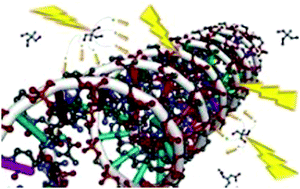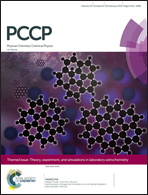Hydroperoxyl radical and formic acid formation from common DNA stabilizers upon low energy electron attachment†
Abstract
2-Amino-2-(hydroxymethyl)-1,3-propanediol (TRIS) and ethylenediaminetetraacetic acid (EDTA) are key components of biological buffers and are frequently used as DNA stabilizers in irradiation studies. Such surface or liquid phase studies are done with the aim to understand the fundamental mechanisms of DNA radiation damage and to improve cancer radiotherapy. When ionizing radiation is used, abundant secondary electrons are formed during the irradiation process, which are able to attach to the molecular compounds present on the surface. In the present study we experimentally investigate low energy electron attachment to TRIS and methyliminodiacetic acid (MIDA), an analogue of EDTA, supported by quantum chemical calculations. The most prominent dissociation channel for TRIS is through hydroperoxyl radical formation, whereas the dissociation of MIDA results in the formation of formic and acetic acid. These compounds are well-known to cause DNA modifications, like strand breaks. The present results indicate that buffer compounds may not have an exclusive protecting effect on DNA as suggested previously.



 Please wait while we load your content...
Please wait while we load your content...